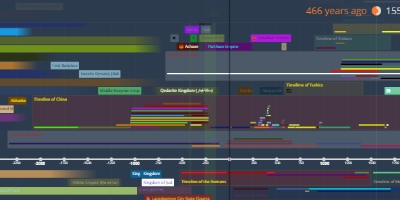Qin Dynasty (秦) (jan 1, 221 BC – jan 1, 206 BC)
Description:
The Qin dynasty (formerly romanized as Ch'in) ([tɕʰǐn], Chinese: 秦朝; pinyin: Qíncháo; Wade–Giles: Chʻin²-chʻao²) was the first dynasty of Imperial China, lasting from 221 to 206 BC. Named for its heartland in Qin state (modern Gansu and Shaanxi), the dynasty was founded by Qin Shi Huang, the First Emperor of Qin. The strength of the Qin state was greatly increased by the Legalist reforms of Shang Yang in the fourth century BC, during the Warring States period. In the mid and late third century BC, the Qin state carried out a series of swift conquests, first ending the powerless Zhou dynasty and eventually conquering the other six of the Seven Warring States. Its 15 years was the shortest major dynasty in Chinese history, consisting of only two emperors, but inaugurated an imperial system that lasted from 221 BC, with interruption and adaptation, until 1912 AD.The Qin sought to create a state unified by structured centralized political power and a large military supported by a stable economy. The central government moved to undercut aristocrats and landowners to gain direct administrative control over the peasantry, who comprised the overwhelming majority of the population and labour force. This allowed ambitious projects involving three hundred thousand peasants and convicts, such as connecting walls along the northern border, eventually developing into the Great Wall of China, and a massive new national road system, as well as the city-sized Mausoleum of the First Qin Emperor guarded by the life-sized Terracotta Army.
The Qin introduced a range of reforms such as standardized currency, weights, measures and a uniform system of writing, which aimed to unify the state and promote commerce. Additionally, its military used the most recent weaponry, transportation and tactics, though the government was heavy-handedly bureaucratic. Han Confucians portrayed the legalistic Qin dynasty as a monolithic tyranny, notably citing a purge known as the burning of books and burying of scholars although some modern scholars dispute the veracity of these accounts.
When the first emperor died in 210 BC, two of his advisors placed an heir on the throne in an attempt to influence and control the administration of the dynasty. These advisors squabbled among themselves, resulting in both of their deaths and that of the second Qin Emperor. Popular revolt broke out and the weakened empire soon fell to a Chu general, Xiang Yu, who was proclaimed Hegemon-King of Western Chu and Liu Bang, who later founded the Han dynasty. Despite its short reign, the dynasty greatly influenced the future of China, particularly the Han and its name is thought to be the origin of the European name for China.
Added to timeline:
Date:
jan 1, 221 BC
jan 1, 206 BC
~ 15 years
